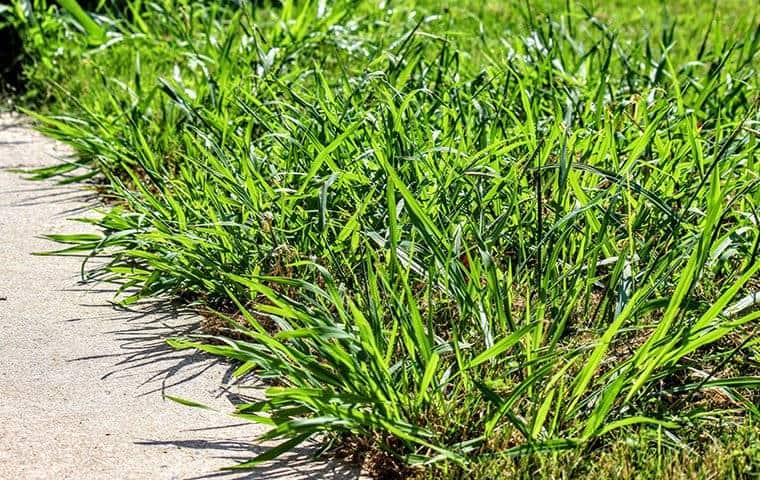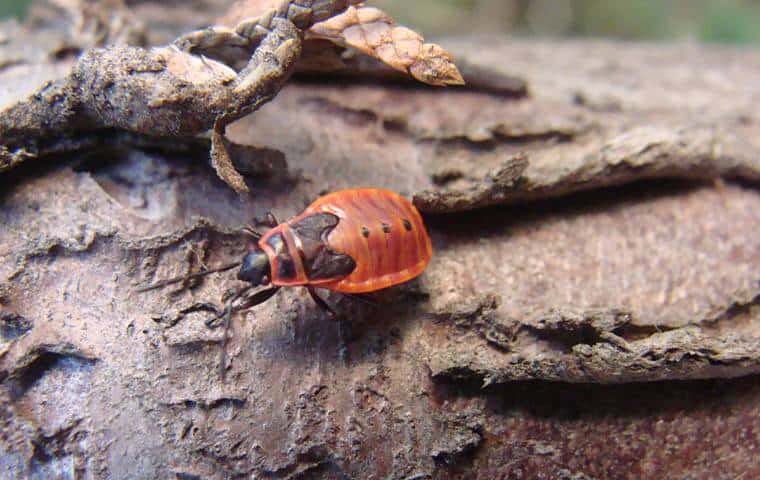Texas, with its vast landscapes and diverse ecosystems, is home to an intriguing group of organisms: tree fungi. These often-overlooked life forms play a vital role in the health and vitality of our forests, parks, and gardens. From lush oak groves to sprawling pecan orchards, tree fungus thrives in Texas’s humid climate, contributing to various tree diseases that affect local vegetation. But many homeowners and gardeners remain unaware of the surprising impact these fungi have on their prized trees.
Understanding tree fungus is essential for anyone who spends time cultivating green spaces or caring for outdoor flora. The presence of certain fungi can indicate underlying issues that might threaten your trees’ health, such as susceptibility to disease from hypoxylon. Armed with knowledge about tree fungus, you can protect your garden while appreciating the unique roles these fungi play in nature’s intricate web. Dive into our article as we reveal seven surprising facts about Texas tree fungus that will broaden your perspective and inspire you to dig deeper into your backyard.
What is Tree Fungus?
Tree fungus refers to a wide variety of fungal organisms that colonize trees, often manifesting as visible growths or lesions on the bark and wood. These fungi thrive by breaking down complex organic materials found in trees, such as cellulose and lignin, which can accelerate natural decomposition processes. The development of tree fungus typically begins when spores land on a suitable host tree during periods of warm and damp conditions—common in Texas’s humid climate. Once established, these fungi penetrate the bark and release enzymes that digest the tree’s tissues, resulting in rot or decay if not managed effectively.
In Texas, you’ll find several notable types of tree fungi, each with its unique characteristics and effects on host trees. One common example is the oak wilt pathogen, Ceratocystis fagacearum, which primarily affects oak species and can cause rapid tree decline, especially in red oak. Another prevalent fungus is the honey fungus (Armillaria spp.), known for its distinctive yellow-brown caps and white gills; it has a penchant for attacking stressed or weakened trees but can also uplift healthy ones through underground networks typically referred to as mycelium. Additionally, Polyporus formentarius is often spotted on decaying hardwoods like oaks and pecans throughout Texas. This bracket fungus may appear large and shelf-like as it feeds off dead or dying wood.
Understanding these diverse fungal types is crucial for gardeners and homeowners alike, as many play an essential role within their specific ecosystems while impacting local plants health. Some end up being beneficial decomposers contributing to soil fertility. Nonetheless, without careful monitoring and management strategies—like proper pruning techniques or avoiding overwatering—the wrong type can lead to severe issues ranging from structural instability to unexpected tree deaths in our landscapes.
Moreover, it’s important to recognize that not every fungi presents a threat; some develop symbiotic relationships with trees where both parties mutually benefit. By grasping how tree fungus develops and knowing which types are common in your area, you can better appreciate the complexities of plant health while ensuring your beloved garden remains flourishing amidst life’s natural cycles.
The Role of Tree Fungus in Ecosystems
Tree fungi play a pivotal role in maintaining healthy ecosystems, impacting more than just the trees they inhabit. These organisms are vital decomposers, breaking down dead organic matter such as fallen leaves and decaying wood. This decomposition process is crucial for nutrient recycling, as it releases essential nutrients back into the soil. In Texas, where diverse tree species abound—from towering oaks to resilient pines—tree fungi help to ensure that the forest ecosystem remains rich and vibrant by facilitating the growth of new plants.
One of the most interesting aspects of tree fungi is their symbiotic relationships with trees through mycorrhizal associations. These partnerships enhance nutrient uptake for both parties involved; while trees provide sugars produced during photosynthesis, fungi increase access to water and key minerals like phosphorus and nitrogen. Research has shown that these connections can significantly improve tree survival rates during drought periods, which is particularly relevant in Texas’s variable climate. So, not only do fungi promote individual tree health, but they also contribute to broader ecosystem resilience.
Soil health is another benefit stemming from the presence of tree fungi. Fungal networks aid in the formation of soil aggregates—clusters of soil particles that improve air circulation and water retention, enhancing tree care practices. Healthy soil supports diverse microbial communities that further enrich plant life. For gardeners and homeowners in Texas who aim to create thriving landscapes, fostering an environment conducive to fungal growth can lead to healthier gardens and lawns by enhancing overall soil structure and fertility.
Moreover, understanding how tree fungi contribute to ecosystem function underscores their importance beyond timber production. As stewards of our natural landscapes, recognizing the value of fungi can lead us toward more ecologically savvy practices—whether planting native species that encourage beneficial fungal partnerships or implementing organic gardening methods that nurture this often-overlooked kingdom. Emphasizing these ecological benefits makes it clear: preserving our local tree fungus isn’t just about saving trees; it’s about sustaining entire ecosystems vital for wildlife and future generations alike.
Signs of Tree Fungus Growth
Recognizing the signs of tree fungus growth is essential for maintaining healthy trees. Among the most common symptoms are discoloration and abnormal growths on leaves, branches, and trunks. For instance, you’ll often see yellowing or wilting leaves that indicate a fungal infection may be taking hold. Additionally, look for unusual growths like mushrooms or puffball formations sprouting from the bark or soil surrounding the tree—these can be telling signs that your tree’s health is compromised by some opportunistic fungi.
When trying to identify different types of fungus affecting your trees, it’s important to pay attention to both visual cues and changes in behavior. Certain fungi manifest with black spots on leaves (known as “leaf spot disease”), while others cause rot in wood—often mistaken for simple decay until it becomes severe. Fungi such as Oak Wilt present distinctive patterns: you may note rapid defoliation along with dark streaks in the veins of leaves. Other more insidious types might fester beneath the bark, revealing themselves only through unexplained thinning of foliage or sudden drops in fruit yield.
Equipped with knowledge about these signs, gardeners and homeowners will be better positioned to act quickly when noticing abnormalities on their trees. Using tools like a simple magnifying glass can help reveal surface spores and other subtle cues that warrant closer inspection. Remember also to inspect turning leaf edges; those curling up might indicate saprophytic fungi at work! By becoming vigilant observers of their trees’ beauty and health, homeowners can foster a proactive approach to tree care, managing any fungal issues before they escalate into larger problems.
Being able to differentiate between benign fungi that play an important ecological role versus harmful parasites could mean the difference between preserving a beloved tree or losing it altogether. Not every mushroom is out to harm your garden—many collaborate positively within ecosystems! Understanding how tree fungus grows and recognizing its symptoms empowers people not just to protect their own trees but also contribute positively to the overall health of local green spaces throughout Texas.
Impact on Tree Health
Fungal infections can have a profound impact on the overall health and vitality of trees, particularly in a diverse ecosystem like Texas. When fungi invade a tree, they often target essential components such as the bark, wood, or leaves. For instance, the notorious oak wilt fungus not only disrupts nutrient flow but can also cause rapid dieback in oak trees—a significant concern for homeowners struggling to maintain their landscaping. This disruption stems from the fungus clogging the water-conducting vessels within the tree, leading to wilting and even tree death within just weeks if left unmanaged.
Moreover, fungal infections can weaken trees significantly over time, making them more susceptible to environmental stressors such as drought, pests, or high winds. When a tree is already battling a fungal infestation, its resilience wanes; it becomes less capable of withstanding harsh weather conditions or attacks from insects like bark beetles. A striking example of this vulnerability is seen in pine trees affected by fusiform rust disease—this slow-acting pathogen creates galls that ultimately compromise structural integrity and vitality, potentially resulting in economic losses for timber growers and impacting local ecosystems where these pines serve as key species.
The long-term consequences of untreated fungal infections, such as hypoxylon canker, should not be understated. As these pathogens spread invisibly through an infected tree’s root system or via spores blown by wind or carried by insects, entire populations can suffer. For example, if one elm tree in a neighborhood contracts Dutch elm disease due to associated fungal pathogens, neighboring elms might face similar fates during subsequent seasons as the disease propagates through common root connections. Such cascading effects underscore how vital early detection—and prompt treatment—are in conserving both individual trees and community greenscapes alike.
For gardeners and homeowners who take pride in their landscapes, becoming vigilant about potential fungal threats serves as a basis for preventative care practices. Regular monitoring coupled with informed treatments can encourage healthier growth patterns. Understanding this dynamic relationship between fungi and tree health emphasizes why knowledge about these organisms is crucial—not just for maintaining trees beauty but also for protecting biodiversity across Texas ecosystems.
Combatting Tree Fungus – Hypoxylon Canker
When it comes to managing tree fungus effectively, early detection is crucial. Once you suspect an issue, treatment options vary based on the type of fungus identified. For instance, a simple application of fungicidal sprays can help control specific types of surface fungi that manifest as leaf spots or fruiting bodies on wood. However, for more invasive fungi like root rot pathogens, a more comprehensive approach may be necessary, potentially involving soil drainage improvements or even removing affected roots.
Prevention is just as essential in maintaining tree health. Regularly cleaning up dead leaves and pruning any dead branches not only enhances your yard’s beauty but also minimizes the habitat for fungal spores to thrive. Additionally, ensuring proper watering techniques—like deep watering rather than frequent shallow applications—can bolster overall tree vigor and resilience against infections. Incorporating organic mulch around your trees can improve moisture retention while preventing weeds that compete for nutrients.
Equally important is the continuous monitoring of tree health throughout the seasons. Schedule regular inspections to check for any changes in your trees’ structures or symptoms indicative of disease. Observing unusual patterns in leaf drop or crown dieback can signal deeper issues related to fungal infestations or other stressors that require immediate attention before they escalate into larger problems. Implementing these proactive strategies keeps your trees healthy and helps protect them from the damaging effects of common Texas tree fungi, including hypoxylon canker.
Finally, building a strong relationship with local arborists can provide invaluable insights regarding specific pests and diseases common in your area. They can offer tailored advice on how best to combat tree fungus while addressing unique environmental factors affecting your landscape. By fostering this connection—and remaining vigilant about monitoring—homeowners can create a thriving ecosystem where their trees remain resilient against fungal threats while contributing positively to Texas’s rich biodiversity.
Fascinating Fungal Relationships
When we think of fungi, our minds often drift toward the negative implications they can have on trees, such as disease and decay. However, a remarkable aspect of these organisms is their ability to form symbiotic relationships—mutually beneficial partnerships that play a crucial role in forest ecosystems. One of the most well-known types of these partnerships involves mycorrhizae, where fungi attach to the roots of trees and other plants, enhancing their ability to absorb water and essential nutrients from the soil.
In Texas, many native tree species rely heavily on mycorrhizal fungi for optimal growth. For instance, oak trees often engage with various fungal species that connect them to nearby plants through an extensive underground network known as the “Wood Wide Web.” This arrangement not only improves nutrient uptake but also facilitates communication between different tree species. Through this intricate web, struggling plants can receive nutrients or even warning signals about pest infestations or diseases afflicting neighboring flora. Such connections underscore the interdependent nature of forest health and highlight why understanding tree fungus is vital for gardeners and homeowners alike.
These fascinating fungal relationships extend beyond mycorrhizae; some fungi contribute directly to tree health by decomposing organic matter in the environment. Certain wood-decaying fungi break down dead trees and fallen leaves, ultimately recycling nutrients back into the soil. This process not only supports new plant life but also enriches the ecosystem for a variety of organisms dependent on nutrient-rich habitats. Texas boasts diverse environments—from dense pine forests to sprawling oak savannas—that benefit greatly from these ecological dynamics.
Ultimately, by considering these positive interactions between trees and fungi, we gain a more balanced perspective on what tree fungus represents in our environments. Recognizing that not all fungi are harmful can empower us as guardians of our natural landscapes. Embracing this will lead us to appreciate—and protect—the essential roles that both trees and their fungal partners play in maintaining healthy ecosystems throughout Texas.
Notable Species Found in Texas
Texas is home to a remarkable diversity of tree fungi, each with unique characteristics and roles within their ecosystems. One notable species is the *Ganoderma lucidum*, commonly known as reishi or lingzhi mushroom. This striking fungus often features a shiny, reddish-brown cap with a kidney shape and is typically found at the base of hardwood trees, particularly oaks and sycamores. Beyond its visual appeal, *Ganoderma lucidum* has been utilized in traditional medicine for centuries due to its potential health benefits, including immune system support.
Another fascinating species endemic to Texas is the *Lentinula edodes*, more widely recognized as shiitake mushrooms. Often cultivated for culinary purposes, these fungi thrive on decaying logs, especially those from hardwood trees such as red oak or oak. Shiitake mushrooms not only enhance dishes with their rich umami flavor but also play a crucial role in decomposition by breaking down complex organic materials in wood, thereby enriching the soil they inhabit.
In addition to these well-known types, there’s also the *Polyporus squamosus*, or the chicken-of-the-woods mushroom. This vibrant fungus can be found growing on living or decaying trees and usually appears as bright yellow to orange brackets that resemble waves or shelves protruding from tree trunks and logs. Its name comes from its meaty texture and taste reminiscent of chicken when cooked, making it a popular choice among foragers seeking edible varieties of fungi.
Lastly, take note of *Armillaria mellea*, also referred to as honey fungus; this widespread parasitic fungus can wreak havoc on both living and dead trees. It typically thrives underground but manifests above ground through clusters of yellowish-brown mushrooms near infected host trees during moist weather conditions.
Myths and Misconceptions About Tree Fungus
Despite the vital role that tree fungi play in our ecosystems, many myths and misconceptions surround them, causing confusion among homeowners and nature enthusiasts alike. One prevalent myth is the belief that all tree fungi are harmful and indicative of a dying tree. In reality, while some species do cause tree diseases, others are harmless or even beneficial to the ecosystem. For instance, saprophytic fungi break down decaying wood, returning crucial nutrients to the soil, which is essential for tree care and health. Understanding this distinction can help gardeners appreciate the vital role these organisms play.
Another common misconception is that fungal infections spread rapidly and uncontrollably once established on a tree. Many people fear that a single mushroom appearance means an imminent threat to their entire landscape, particularly in north Texas where tree diseases are prevalent. However, this isn’t always the case; many fungi operate as opportunistic pathogens targeting trees already stressed by environmental factors such as drought or nutrient deficiency. Regular monitoring and proper management practices can often keep infections at bay while allowing beneficial species to thrive.
Safety concerns also lurk within these myths—many individuals believe that touching or coming close to mushrooms growing on trees poses health risks. While certain fungi can be toxic or allergenic, studies suggest that most common tree fungi found in Texas present little danger to humans unless ingested improperly. Awareness is key: safe handling practices include wearing gloves when dealing with unknown species and educating oneself about specific types in their area before making any assumptions about safety.
Debunking these myths is crucial for responsible tree management and public understanding of ecology, especially regarding tree diseases. Homeowners who remain informed can better care for their trees while fostering appreciation for the importance of fungi in nature’s intricate web. By recognizing both the benefits and potential downsides of tree fungus, we create a foundation for healthier landscapes where trees—and their fungal partners—can flourish together harmoniously.
Unlocking the Mysteries of Texas Tree Fungus
Understanding tree fungus is essential for anyone who loves trees. Being aware of its presence and implications can help gardeners, homeowners, and nature enthusiasts alike protect their green spaces. Fungi play a vital role in our ecosystems, but they can also threaten tree health if left unchecked. The surprising facts shared throughout this article highlight just how intriguing and complex these organisms are.
As you cultivate your relationship with nature, take the time to learn more about the fungi in your area. Monitor your trees regularly and remain curious about what’s happening in your yard or local park. With a little knowledge and proactive care, you can ensure that both your trees and their fungal companions thrive together harmoniously.




